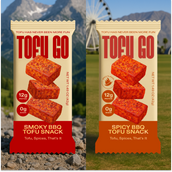Spice is not limited to food. It’s identity, flex, part of the culture. For decades, America treated spice like a novelty: a jalapeño on nachos at the ball game, “extra hot” wings that send you running for ranch, or the infamous “atomic” sauce meant to separate the brave from the weak.
But somewhere between Sriracha bottles becoming table essentials and Hot Ones turning celebrity interviews into endurance tests, spice stopped being only for special occasion. It became culture.
Riding on the Spicy Train
In 2025, spice isn’t just about flavor, it’s about status. Ordering Thai food “Thai spicy,” not “American spicy,” is bragging rights. A report by Quad Insights (2025) found 78% of Gen Zs surveyed said they either like or love spicy foods and flavors. Also, 66% say they’re more likely to purchase a food item if it is advertised as spicy. There is also a biological side to this cultural shift. Capsaicin, the compound that makes chili peppers hot, activates pain receptors and releases endorphins. This creates a “burn” that can feel addictive. Once niche, now popular, the spicy train is not going to slow down.
Gen Z is Turning Up the Heat
Millennials might have brought Sriracha into the mainstream, but Gen Z is running with it. They’re raised on Flamin’ Hot Cheetos, Takis, and ramen flavors that are never plain. For them, spice isn’t exotic. It’s everyday. Global flavors like peri-peri, and chili crisp are pantry staples. Forget ketchup, it’s chili oil time.
So, Can America Handle Spice?
Yes, more than before. Hot sauce sales have steadily risen over the past two decades, chili oils and spice pastes once considered “specialty items” are widely available in national grocery chains. Younger generations are increasingly open to global flavors. From spicy ramen to lip balm with chili, spice is becoming part of the mainstream culture.
We are TofuGo Snacks, transforming tofu into high-protein, portable snacks. One of our launch flavors is Spicy BBQ, a savory protein bar that blends 12g of clean protein with a bold, chili-forward taste. Creating it wasn’t just about adding heat for the sake of it. It was about asking: can spice be functional, craveable, and part of your daily routine?


Leave a comment